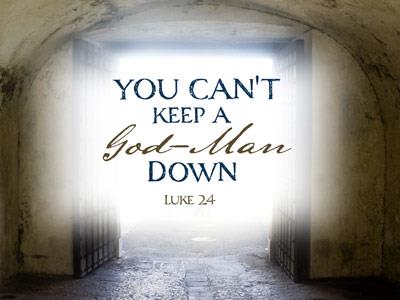-
Easter Sermon On Peter
Contributed by Ava Ch on May 26, 2025 (message contributor)
Summary: Resurrection hope meets us in our wandering and regret, assuring us that no failure is final when grace rolls the stone away.
Introduction
Christ is risen! He is risen indeed.
Friends, we gather on this Easter morning in the light of resurrection, but many of us carry shadows too. The shadows of the past year. The shadows of our regrets. And if we’re honest, some of us arrive like Peter—with hearts that have wandered, questions that linger, and hope that feels almost too fragile to hold.
In our Lenten journey with Wandering Heart, we’ve walked with Peter—the bold, the broken, the beloved disciple who couldn’t always get it right. Today, the story doesn’t end with Peter’s denial. It continues at the tomb—with a race, a mystery, and a hope that refuses to let him go.
1. A Story: The Torn Letter
There’s an old story of a teenager who, after a terrible fight with his father, stormed out of the house, slamming the door behind him. Days passed. Then weeks. The son felt ashamed, certain he wasn’t welcome back. But he longed to return.
One day, he received a letter. It was from his father. It said:
"All is forgiven. I’ll be sitting on the bench at the train station on Friday. If you want to come home, come. If you don’t see me, I’ll understand."
The boy took the train. His heart raced. Would his father really be there? As the train pulled in, he pressed his face to the window. There on the bench, with arms wide open, sat his father—holding a sign with one word:
“Home.”
That’s Easter. That’s what Peter ran toward.
Not certainty. Not a theology test. Just hope that maybe—just maybe—he wasn’t too far gone.
2. “Why Do You Look for the Living Among the Dead?” (vv. 1–5)
The women brought spices to honor the dead. They were acting in love, but they weren’t expecting life. And yet—God had already acted.
The angel’s words are timeless:
“Why do you look for the living among the dead?”
This is not just a question for then—but for us.
Why do we return to old regrets, identities, and tombs when Christ has opened a new future?
3. The Linen Cloths: A Theology of the Left-Behind Grave Clothes (v. 12)
When Peter reaches the tomb, what he finds is unexpected: the linen cloths lying by themselves.
Why is that important?
In ancient Jewish burial practices, the body was wrapped tightly in linen, like a cocoon. To leave the clothes behind was more than a sign of physical absence—it was a declaration: “Death no longer holds me.”
Contrast this with Lazarus in John 11. When Jesus raises Lazarus, he comes out still bound in cloth—needing help to be unwrapped. But Jesus leaves the cloths behind. His resurrection is not a resuscitation—it is a transformation. He is not returning to his old life. He is stepping into new creation.
And Peter sees it. The same cloth that once covered Jesus’ broken body is now empty—a sign of freedom, not decay. A discarded garment of death.
It’s as if Jesus is saying:
“I am finished with death. And so are you.”
4. Peter Ran—Because Hope Was Still Possible
We don’t know exactly why Peter ran. But we can imagine. He had denied Jesus and abandoned him in his hour of need. And now? A rumor. A mystery. A whisper that maybe the grave could not hold the one he betrayed.
Peter doesn’t walk—he runs.
He bends down. He sees the linen.
And Luke tells us: “He went home, amazed.”
He didn’t yet understand everything. He hadn’t seen Jesus yet. But he had seen enough to hope again.
5. The Hope That Runs Ahead
This Easter, some of us come with songs and lilies.
But some come with silence and spices, like the women.
Some come with questions and regrets—like Peter.
And to all of us, Easter says:
You are not too late. You are not too lost. You are not too broken.
Even when your heart has wandered, the Risen Christ runs to meet you.
Even when you’ve failed, the linen cloth is still there, testifying that death does not define you.
The same grace that found Peter on a shoreline and asked, “Do you love me?”
is here for you today.
Conclusion: Come and See
The stone is rolled away.
The tomb is empty.
The grave clothes are folded and finished.
The risen Lord is already on the move—toward Galilee, the shore, and you.
Like Peter, may we run toward this truth:
Christ is risen. And so is hope.
Amen.

 Sermon Central
Sermon Central



